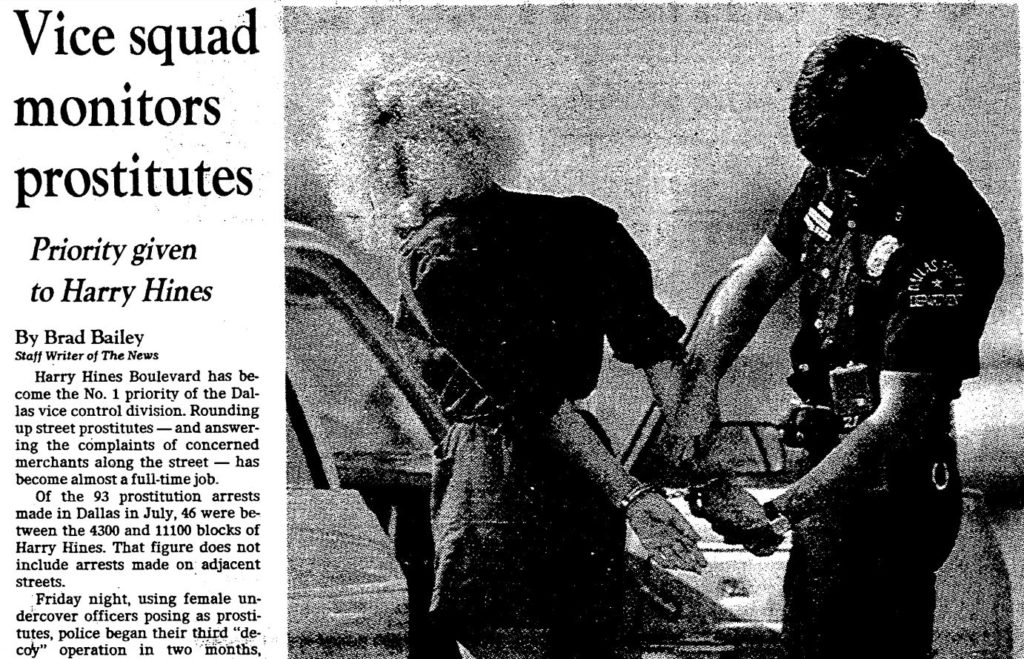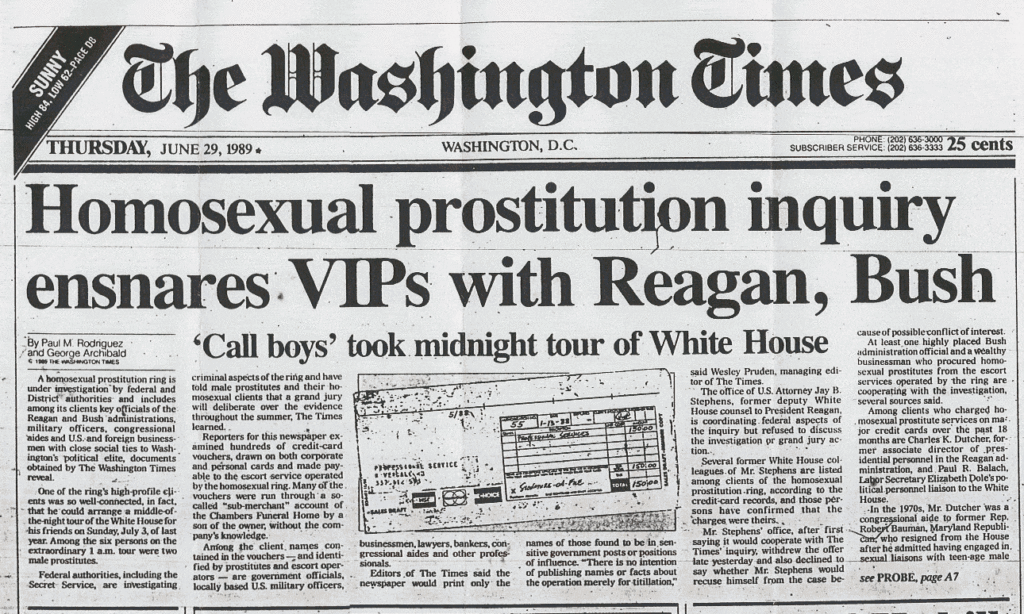What Sex Working Journalists Know About Labor, Money, and Power in Media
Stories on Stormy Daniels, OnlyFans, and SESTA/FOSTA brought about major shifts in how journalism engages with sex work — and put sex working journalists at the helm of the narrative.
“We learn about worlds when they do not accommodate us.” Sara Ahmed
“That’s a beautiful little girl – it’d be a shame if something happened to her Mom.” These were the words Stormy Daniels reported hearing from a strange man in a parking lot in 2011, while walking with her then-infant daughter. Daniels relayed the terrifying incident to Anderson Cooper during a nationally anticipated interview on CBS News’ 60 Minutes in March of 2018. This interview was a high point of visibility for both Daniels and the scandal involving then-President Trump. His alleged approval of hush money paid to the adult actress, in order to conceal an affair she had participated in over a decade prior, had become a subject of national scrutiny. This proximity to Presidential politics, and her legal fight over an accompanying NDA alongside Trump’s denial of the affair, became a cultural flashpoint for publications critical of President Trump.
Melissa Gira Grant, staff writer at The New Republic and author of Playing The Whore, noted in a 2018 interview with the Columbia Journalism Review that the scandal involving then-President Trump and Stormy Daniels occurred the same year as the passage of SESTA/FOSTA. Both Vogue’s “Stormy Daniels Isn’t Backing Down” and Rolling Stones’ “One Night With Stormy Daniels, The Hero America Needs” position Daniels in the same glorious, vindicated light usually reserved for venerated politicians or A-list celebrities. Just a little more than a month after Rolling Stone’s article about Daniels was published, SESTA/FOSTA passed the Senate in a 97-2 vote and was signed into law. Rolling Stone published four different pieces about the legislation, all of which were penned by sex workers Tina Horn and Siouxsie Q. These two climactic events, and the coverage that surrounded them, marked an uneven shift in contemporary digital journalism’s relationship with sex work.
The media buzz surrounding Daniels was largely sympathetic, partially fueled by liberal journalists who saw Daniels as another piece of anti-Trump ammunition. But similar positive coverage was only haphazardly extended to sex workers harmed by the fallout of SESTA/FOSTA. The legislation’s language around “sex trafficking” made it difficult for uninformed journalists and readerships to parse, in addition to public support being swayed by a celebrity PSA urging the amendment of Section 230. That coverage also took place at a societal scale, and not in the harrowing and humanizing way in which Stormy Daniels’ life story had been detailed. Scrolling through the archives of journalistic outlets that did publish articles on SESTA/FOSTA or Stormy Daniels, there are months-long gaps in the coverage of sex work. When there isn’t a dangerous piece of legislation, a highly-publicized trial, or a hyper-notable figure to cover, sex workers seem to disappear from the headlines. This fraught relationship between the two industries results in a complicated tension. Sex workers will be publicly supported during social or political moments when it’s convenient, but only if the situation is one that casts the sex working individual as a victim, or renders a sex working community powerless.
Secure, sex work-friendly digital real estate had largely disappeared following the passage of SESTA/FOSTA in April 2018. Before the bill was even passed into law, Backpage was seized by the Department of Justice, and Craigslist’s Personals section, Patreon, and various Reddit pages dedicated to sex work (r/escorts and r/hookers) voluntarily and preemptively shuttered to avoid federal attention or prosecution. These events prompted a growing political consensus among sex worker writers and activists to organize in opposition to these developing narratives – a consensus which began to coalesce during the 2018 International Whore’s Day protests. Through organized social media pressure on journalistic outlets to cover the changes to Section 230 contained within SESTA/FOSTA, particularly under the hashtag #LetUsSurvive, sex workers began to be brought in. The coverage was shaped by individuals at all levels, from those brought in as interview subjects, to sex workers writing within the context of their lived sex working experience.
In August of 2021, OnlyFans announced with little warning that it would be banning pornographic content from the website. Sex workers and those standing in solidarity with them once again took to social media to decry this shift in policy. This abrupt change marked yet another decision made by a website to build a platform that initially catered to adult content creators, only to later ban them when it became profitable or legally advisable to do so. Sex workers at the time of the (now-reversed) ban also noted that this decision by OnlyFans came 18 months into a pandemic that had already forced many workers to shift to digital content, in effect exploiting a cornered and vulnerable userbase with few comparable alternatives to turn to.
Following the OnlyFans decision, mainstream publications began putting out pitch calls, asking specifically for sex workers directly affected by the policy change to cover this issue. And while some sex workers were being hired to write about the OnlyFans situation, it was often those with pre-established journalistic relationships, like Tina Horn and Stoya, while throughout the pandemic other workers were being outed for operating OnlyFans pages in addition to their public-facing civilian work. In the decades prior to SESTA/FOSTA and OnlyFans, journalism had focused on the sex industry in ways that enforced broader cultural feelings of disgust, disapproval, and eugenicist concerns about maintaining social health.
Originating within the Los Angeles Police Department during the 1960s, the acronym “NHI,” or “No Humans Involved” , was used on internal police reports with horrific dehumanizing intent to describe the deaths of Black and brown individuals. Sometime in the 1980s or 1990s, that definition expanded to encompass the deaths of sex workers. Journalistic coverage surrounding crime has often relied heavily, if not entirely, upon police reports or law enforcement accounts of an incident. This heavily ingrained police bias in journalism, a bias which continues today at some of the most notable institutions in the industry, profoundly informs the way labor fields that are partially or entirely criminalized, like the drug trade or sex work, are covered.
Police officers intentionally targeting sex workers occurs as in-person unlawful arrests, harassment, and violence, and extends all the way to the harassment of journalists reporting on sex work. As Melissa Gira Grant recounted for her interview with CJR, she interviewed an organization purporting to help sex workers, but following their conversation, she learned that organization deemed the interaction hostile and passed her reporting on to law enforcement. “It’s not the first time I’ve had people send my reporting to members of law enforcement,” recalled Grant, who learned about that organization’s cooperation with police through a FOIA request.
The shift away from stigmatizing and dehumanizing narratives for those who participate in sex work must be contextualized alongside the ubiquity of social media as a tool for marginalized people to connect and organize. This organizational urgency was also deeply informed by the pressure marginalized people felt following the 2016 election. When I spoke with Adrie Rose, a writer and sex worker, they directly addressed the risky landscape that sex workers face when trying to write, organize, or exist online. “It’s really tricky to publish anything that looks like it might be giving advice for people to do sex work,” details Rose. Following the changes to Section 230 contained in SESTA/FOSTA, a wide range of digital existence has become a potential felony for sex workers, and what little remains continues to be threatened.
Threats of surveillance or carceral violence by law enforcement feeds into the distrust many workers have of journalism, and has become something of a cycle of reinforcement, says Rose. Journalists rely on police reports, which function to reinforce law enforcement narratives of criminality that routinely dehumanize sex workers. If a journalist, in an attempt to rely less on police narratives, brought in individual sex workers to speak about their lived experiences, that increased visibility further puts those workers at risk of criminalization. Rose notes that they “know so many people that simply refuse to talk to journalists because they have been or they have seen their friends outed.” They continue, pointing out that while journalists afford anonymity in situations like whistleblower cases, “it doesn’t seem to be a priority” when the safety in question is that of sex workers. This negative feedback loop contributes to mainstream journalism’s diminished capacity to advocate for sex workers, limiting the possibility of more empathetic coverage.
Rose is verified on Twitter and they have found that larger accounts, particularly those who give out advice or tips on how to safely work in erotic labor, do so because “journalism was not open to and for them.” Those individuals with major social media followings want “to keep their communities safe,” but educational and organizing spaces to facilitate that safety don’t exist and, as previously noted, “creating a space is a crime.” It was easy for Rose to find editors that wanted their situated perspective and firsthand knowledge, because, in their experience, so many publications are looking for “diversity points” in order to lend authenticity to their publications. But even if a writer like Rose does start to be published for their perspective and experiences on sex work, it can become “very difficult, very quickly to branch out of that niche.”
Melissa Gira Grant reflects upon this same point in her interview with the CJR, recognizing that the largest political issues right now, like “economic inequality, the expansion of the criminal justice system, attacks on immigrants,” all intersect with the lives of sex workers. The challenge that Grant highlights is for editors and news organizations to acknowledge “entry points into covering sex work that aren’t about identity per se, but about power, influence, and money.” Author and sociologist of sexuality Dr. Carol Queen notes that attempts by sex workers to cover issues which pertain to their lives isn’t a new phenomenon. Sika and Veronica Vera testified to a Congressional committee as part of the Reagan-era Meese Commission hearings concerning pornography. Vera later wrote about the experience for the men’s magazine Adam. However, Queen clarifies that this coverage of the sex industry was almost exclusively published in sex-centric publications like Playboy and Penthouse, where it was culturally siloed, difficult to access, and hard to proliferate.
Though the lines separating so-called “cultural writing” from “hard journalism” have become more blurred, particularly as entire platforms pivot to a broader model of content creation, there still exists some marginalizing delineation. While women’s magazines like The Cut or Refinery29 might run the occasional article about sex work, the general content of articles surrounding everything from digital self-marketing to sex toy reviews and journalistic sex diaries frequently fail to include their perspectives – positioning workers as a subjugated class of individuals, only to be engaged with when an article necessitates it. Grant, in the aforementioned interview, points to this inconsistent inclusion, notably in how these outlets “haven’t typically started from a place of, what about sex workers themselves?” Instead, “sex work ends up covered like it’s a problem.”
While some cultural movement at journalistic outlets has occurred in the past decade, both in covering sex work and by including bylines by sex workers, the workers who do enter the field face difficulty navigating an antagonistic journalistic landscape. Jessica Stoya, a writer, performer in pornography, and one half of Slate’s How To Do It sex advice column, has seen firsthand the ways in which journalists who are civilians – non-sex working individuals – approach the subject full of biases about the industry. Stoya recounted how, at a convention she was working in the mid-2010s, a journalist approached her and asked if Stoya could connect her to other pornography performers, in order for this journalist to start covering the industry. When Stoya refused, the journalist became upset, complaining how she wanted to “cover something nice and fluffy,” because she was emotionally exhausted from writing about war atrocities.
Reflecting on the incident, Stoya told me that any adult performer can “tell you stories that will make you cry.” The industry is neither “all sunshine and roses nor all abuse,” she continues, offended at the journalists’ intent to write fluff pieces that would only be dismissive of “a real industry with real issues.”
Much of Stoya’s initial writing work was self-published on her Tumblr, where she often spoke to the gaps in civilian’s knowledge around the realities of pornographic work. She confesses that self-publishing “felt really nice” because “after years of being asked the wrong questions over and over,” she was finally able “to write about what I wish people were asking me about.” Following writing stints at various publications, two New York Times op-eds, and sex advice at both Refinery29 and The Verge, Stoya has been writing for Slate for the past 3 years.
When OnlyFans’ policy on explicit content changed, and Slate asked her to respond, Stoya noticed two major shifts she had never seen happen in journalistic coverage of sex work. Journalists were covering the policy change as a labor issue, and sex work “was being talked about as work, en masse.” The other was the range of individuals that journalists were speaking to, not just “one or three of the most famous performers.” For Stoya, seeing journalists source a variety of perspectives on the policy change “says to me that they’re taking it seriously as a subject.”
Dr. Queen discusses how, for years, editors and writers had equated covering sex work with covering human trafficking, and “there was a whole lot of taking at face value the way that the anti-trafficking world set the issues up to be understood.” Trafficking had been the inciting moral crisis behind SESTA/FOSTA, the OnlyFans policy flip-flop, and a century of journalistic fearmongering around “white slavery.” But Queen also saw how, as the outcry from sex workers grew following each successive threat to said workers’ safety, editors began to realize that there was no one in the newsroom, no freelancer who had already written for the publication, “who could actually unpack what had just happened and what the implications were.”
She questions how editors had allowed Ashton Kutcher (who stands to profit from increased digital censorship) to be seen as an expert on the issue of human trafficking. Queen continues, saying that editors with any journalistic sense had “fucking better find a sex worker” to write for them. But finding a sex worker who is available to write an article about a given topic is much easier said than done. As cautioned by Grant in the CJR interview, it’s important for news organizations interested in diversifying their writing staff to ask themselves “which people from that underrepresented group” do they want to include, “and what diversity?”

COYOTE (acronym for Call Off Your Old Tired Ethics, a sex workers’ advocacy organization) marching at SF Lesbian and Gay Freedom Day Parade, 1981 (image courtesy of GLBT Historical Archives)
For Soraya, a freelance writer and sex worker, sex work became a necessary second source of income as the COVID-19 pandemic began and freelance budgets were cut — but an income stream which she needed to remain an anonymous participant in. Her parents were facing economic difficulties of their own, and Soraya was doing what she could to financially support them. While editors have begun to more regularly prioritize work from writers who are personally affected by a given topic, that question became a thorny one for Soraya. “I have to weigh whether or not I think this editor is going to blow up my spot,” she says, and at the same time, consider “do I need to out myself to get this writing gig?” This tension becomes personally frustrating, as she sees misinformed writing from civilians “who are clearly not sex workers,” while she is fearful of doing advocacy around decriminalization from her journalist persona, lest her two digital work identities be connected.
Existing separately and simultaneously in these two fields, while complicated, has also illustrated their similarities for Soraya.“I think that it’s almost the exact same skill set,” she comments, pointing to the fact that journalists without a staff position will be judged by “how many followers you have, as an indication of whether or not you are a good journalist or whether or not you’re trustworthy.” Even as she began doing sex work to maintain her financial stability during the pandemic, “growing a social media account, the way that I needed to when I got into sex work, felt easier because I’d had to do that as a journalist already.” And, as she continues, “it’s a lot easier to grow your social media presence when you’re posting your ass.”
For sex workers who exist outside of the more legally acceptable fields of pornography or camming, balancing the ability to safely write about your work while the work you do is criminalized, is a difficult tension. As Melissa Gira Grant commented, while doing coverage for her 2017 book Playing The Whore, “I got into sex work because I wanted to afford to be a writer.” Shrinking budgets for full time journalism staff, as well as more competition for lower paying freelance opportunities, mean that journalists are often juggling multiple side jobs in order to make end’s meet. The probability that there are sex workers in a given newsroom has likely increased with the economic precarity of the journalism industry, but the tension of managing those two ventures, as Soraya has experienced, is often difficult.
Stoya expressed during our conversation a deep interest in connecting workers across labor fields. She pointed out that anyone “who does a lot of one-to-one interaction” has difficulty coping with the emotional weight of being confided in. She would love to hold discussions “between cam performers, workers and some journalists,” around questions like caring for oneself after an emotionally difficult session. How “can we learn from each other” she asks, if we see both professions as laborers who can organize alongside each other and educate one another?
Grant noted these similarities in her 2018 interview as well, pointing out how journalism’s rapid shift towards a gig-based economy has created an economic reality for writers similar to that of many sex workers, whose livelihoods depend on personal branding. And while there are shifts in the way that editorial coverage takes place around sex work, particularly as a labor issue, Grant expressed that “editors could shift it more purposefully.”
For all of the workers that I spoke to, journalism’s tentative shift towards a more nuanced tone while covering sex work has been encouraging, even if there still remains a distinct apprehension at the legacy of past coverage. Soraya hopes that editors will care about sex work “outside of tragedies or emergencies,” and points to the many possible ways of including sex worker perspectives, particularly in articles on tech and digital labor. Rose takes issue with publications giving articles on the topic to civilian staff writers “that have no idea what they’re talking about.”
They are also wary that whenever you start regularly covering a marginalized community or “flooding a niche,” there will be misinformation produced by publications looking to cash in on a hot topic. With the threat of a reintroduced EARN IT act, as well as the dangerous digital precedent that the shuttering of Switter heralds, sex workers need to be acknowledged as authorities on issues which affect them, now more than ever. “We already know that journalism has an issue with police bias and propaganda,” says Rose. While the general tenor of coverage is “definitely trending in the right direction,” there is still a long way to go.
Subscribe to Study Hall for Opportunity, knowledge, and community
$532.50 is the average payment via the Study Hall marketplace, where freelance opportunities from top publications are posted. Members also get access to a media digest newsletter, community networking spaces, paywalled content about the media industry from a worker's perspective, and a database of 1000 commissioning editor contacts at publications around the world. Click here to learn more.



